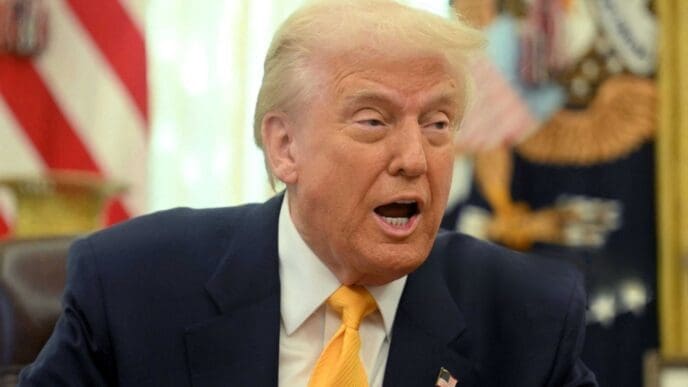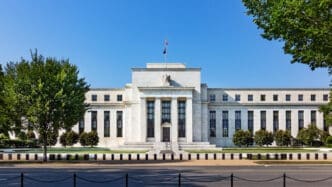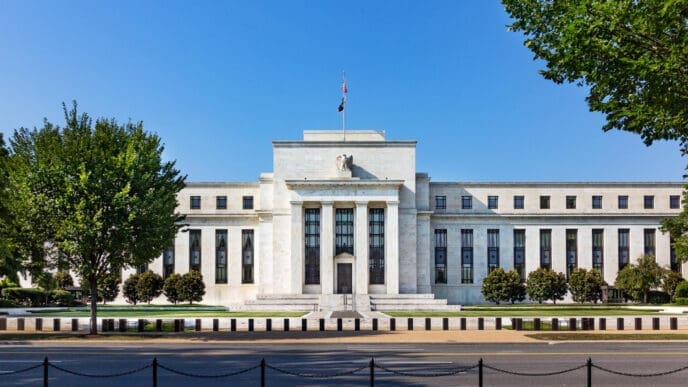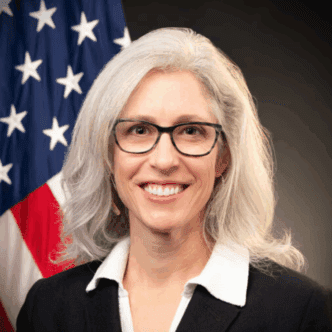Executive Summary
- President Trump fired Federal Reserve Governor Lisa Cook over allegations of mortgage fraud, initiating a legal battle challenging the central bank’s independence.
- Governor Cook has filed a lawsuit to block her removal, asserting President Trump’s action is unlawful and seeking an emergency court order to maintain her position.
- This firing, combined with another recent resignation, creates an opportunity for President Trump to appoint two allies, potentially securing a 4-3 majority on the Federal Reserve’s Board of Governors to influence interest rate policy.
The Story So Far
- President Trump has long sought to exert influence over the Federal Reserve, believing its interest rate policies have hindered economic growth. The recent resignation of one Fed governor, followed by allegations of mortgage fraud against Governor Lisa Cook, presented President Trump with a strategic opportunity to create multiple vacancies on the Board of Governors. His aim is to secure a 4-3 majority, allowing him to appoint allies and potentially shift the central bank’s stance on interest rates, which he views as crucial for sectors like housing.
Why This Matters
- President Trump’s firing of Federal Reserve Governor Lisa Cook, coupled with another recent vacancy, directly challenges the central bank’s independence and could enable him to secure a majority on the Fed’s Board of Governors, thereby granting him significant influence over interest rate policy and the nation’s economic trajectory.
Who Thinks What?
- President Trump and his administration assert that the President acted within his legal authority to fire Governor Lisa Cook “for cause” due to serious mortgage fraud allegations, viewing this as an opportunity to reshape the Federal Reserve Board to align with his economic vision on interest rates.
- Governor Lisa Cook denies the mortgage fraud allegations and has filed a lawsuit arguing that President Trump’s attempt to terminate her is unlawful, seeking an emergency court order to maintain her position.
- Bill Pulte, Director of the Federal Housing Finance Agency, actively shared and publicized mortgage fraud accusations against Governor Cook directly with President Trump, providing the alleged “cause” for her dismissal.
President Trump has fired Federal Reserve Governor Lisa Cook, citing allegations of mortgage fraud, a move that has quickly escalated into a legal battle challenging the century-old central bank’s independence. The decision, announced via social media, follows the recent resignation of another Fed governor, Adriana Kugler, and presents President Trump with an opportunity to reshape the seven-member board. Cook has denied the allegations and filed a lawsuit asking a judge to declare her removal unlawful and to temporarily keep her in her position.
Unexpected Dismissal and Legal Challenge
The firing of Governor Cook came as a surprise to many Trump administration officials and Republican lawmakers, who reported having no prior knowledge of the impending action. Despite the lack of internal debate or coordination, several officials noted that President Trump had publicly pledged to dismiss Cook if she did not resign over the fraud allegations.
Cook’s lawsuit, filed on Thursday morning, seeks to block her removal, asserting that President Trump’s attempt to terminate her is unlawful. She also requested an emergency court order to maintain her position on the Board of Governors while the case proceeds, a request expected to be fast-tracked through the courts.
The White House, however, maintains that President Trump acted within his legal authority. Kevin Hassett, White House Director of the National Economic Council, stated that the president has the authority to fire a Fed governor “for cause” and described the accusations against Cook as “serious.” Hassett suggested Cook should take a leave of absence until the allegations are resolved, implying her refusal indicates partisanship contrary to the Fed’s independence.
Strategic Board Reshaping
The events leading to Cook’s dismissal began on August 1 with the unexpected resignation of Adriana Kugler, a Biden appointee, nearly six months before her term concluded. This created an immediate vacancy that President Trump was reportedly eager to fill with an ally.
Within a week of Kugler’s departure, President Trump selected Stephen Miran, his chief economist and the architect of his tariff strategy, to fill the open seat. Miran is known for echoing President Trump’s view that the Federal Reserve should cut interest rates.
Simultaneously, an official at a federal housing agency reportedly began sharing accusations of mortgage fraud against Governor Cook directly with President Trump. These allegations provided a potential legal basis for her removal, creating a second opportunity for President Trump to appoint another ally to the board.
With two potential vacancies, President Trump could achieve a 4-3 majority on the Federal Reserve’s Board of Governors. This shift would allow him to exert significant influence over the central bank’s policies, particularly regarding interest rates, which he has long criticized as being too high.
Presidential Intent and Administration Support
President Trump’s decision to fire Cook was made following discussions with a small group of advisors, some of whom argued that the legal authority for her removal was clear and the allegations against her substantial. Treasury Secretary Scott Bessent, a key economic advisor, was part of these consultations.
During a Cabinet meeting, President Trump publicly acknowledged his primary motivation, stating, “We’ll have a majority very shortly, so that’ll be great. Once we have a majority, housing is going to swing and it’s going to be great. People are paying too high an interest rate.” Bessent, without naming Cook, offered a justification for the decision, emphasizing the importance of public trust in the Federal Reserve’s independence.
White House spokesman Kush Desai affirmed the administration’s stance, stating, “The President determined there was cause to remove a governor who was credibly accused of lying in financial documents from a highly sensitive position overseeing financial institutions.”
Political and Congressional Ramifications
The controversial move has set the stage for a significant legal battle that could redefine the boundaries of Federal Reserve independence from the White House. It also presents a challenge for Senate Republicans, many of whom have historically championed the Fed’s autonomy, as they will need to consider President Trump’s nominees.
The confirmation hearing for Stephen Miran is anticipated as early as next week, with Trump’s aides reportedly laying groundwork for an accelerated process to ensure his placement before the Federal Open Market Committee’s next policy meeting on September 16.
Sources close to President Trump suggest he is more emboldened to push the limits of executive authority, especially on issues he views as critical to his economic vision. His fixation on the Federal Reserve stems from a belief that its decisions have been a “roadblock” to achieving a thriving economy.
Bill Pulte, director of the Federal Housing Finance Agency, played a role in escalating the situation by directly sharing mortgage fraud accusations against Cook with President Trump and publicizing them. Pulte has previously made similar allegations against other perceived political opponents, which their attorneys have described as a “weaponization of the justice process.”
President Trump’s swift action to remove Federal Reserve Governor Lisa Cook, citing fraud allegations, marks an unprecedented challenge to the central bank’s independence and has initiated a high-stakes legal confrontation. Coupled with another recent vacancy, the move could allow President Trump to secure a majority on the Fed’s Board of Governors, potentially influencing critical interest rate decisions. The unfolding legal and political battles will test the established norms of monetary policy and the balance of power between the executive branch and independent institutions.













